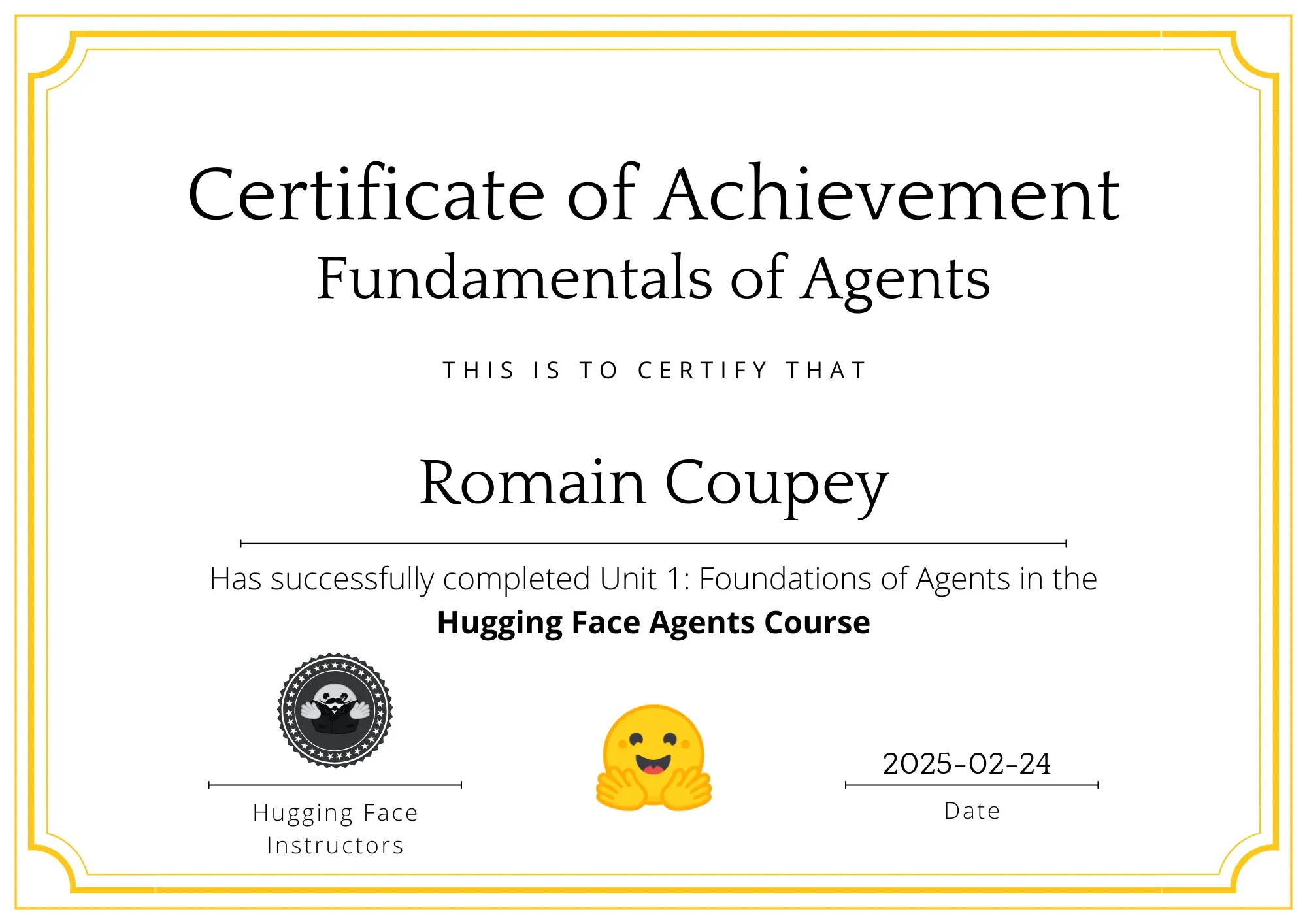Hugging Face recently released the first unit of their AI Agents course. I wanted to share some takeaways about how AI agents function.

What is an AI Agent?
An AI Agent is essentially a system that combines an AI model (typically an LLM) with the ability to interact with its environment. Think of it like a digital assistant that can:
- Understand natural language requests
- Plan and reason about how to fulfill those requests
- Take actions using tools to accomplish tasks
- Learn from the results of those actions
The Three Core Components
The course introduced three fundamental components that make up an agent’s workflow:
-
Thoughts: The agent’s internal reasoning process where it:
- Analyzes the current situation
- Plans the next steps
- Decides which actions to take
- Uses the ReAct approach (Reasoning + Acting) for step-by-step planning
-
Actions: How the agent interacts with its environment through:
- Tools (functions or APIs it can call)
- Structured formats (usually JSON or code)
- The “stop and parse” approach for reliable execution
-
Observations: How the agent processes feedback by:
- Collecting results from actions
- Updating its understanding
- Adapting its strategy based on outcomes
The Role of LLMs
Large Language Models serve as the “brain” of AI agents:
- LLMs work by predicting the next token in a sequence
- They use special tokens to structure their input and output
- Messages are formatted using chat templates specific to each model
- The system prompt defines the agent’s behavior and available tools
Practical Implementation
Key insights of building a simple agent using smolagents:
- How to define tools using Python decorators
- The importance of well-structured documentation for tools
- How to use the system prompt to give an agent access to tools
- The iterative nature of the agent’s decision-making process
Real-World Applications
The course demonstrated several practical applications:
- Personal virtual assistants
- Customer service chatbots
- AI NPCs in video games
- Task automation systems
Conclusion
This new Hugging Face course demystifies AI agents. Rather than being magical black boxes, they’re structured systems that combine:
- LLMs for reasoning
- Tools for taking action
- A clear workflow for processing and responding
If you’re interested in AI agents, I highly recommend checking out the course yourself, or even the source code on GitHub.